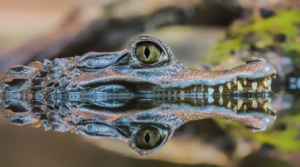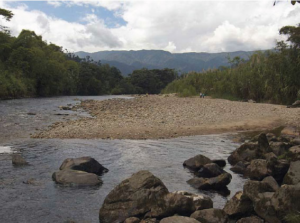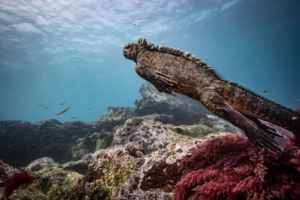What is ayahuasca?
It is a medicinal and sacred drink for a large part of the Amazonian peoples. This herbal plant has been an essential part of the life of indigenous peoples. Ayahuasca is taken in purification, learning and healing ceremonies.
The word “ayahuasca” is a Quechua term composed of two names: aya, which means “corpse, dead, dead human body”, and waskha, which means “rope, rope, braided or twisted cable”. For this reason, it has been commonly translated as “the vine of the dead” or “the rope of the dead”.
Ayahuasca, also known as yagé, is a mixture of two plants – the ayahuasca vine (Banisteriopsis caapi) and a shrub called chacruna (Psychotria viridis), which contains the hallucinogen dimethyltryptamine (DMT).
The word ayahuasca designates both the preparation made with Banisteriopsis caapi and the tea resulting from adding it with other plants of traditional Amazonian medicine, which is the most common.
From an anthropological point of view, Ayahuasca has been used for thousands of years by Amazonian cultures under a notion of respect towards nature. This plant is used only for rituals. In other countries, these ceremonies will not be carried out due to a lack of knowledge of the culture, geography and history of the people who use it. Therefore, biopiracy contributes to the prostitution of the ancestral knowledge of native peoples.
Other names that different peoples have used and still use to name the preparation are: caapi, dápa, mihi, kahí, natem, pindé, yajé, daime, vegetal, among many others.
The origin of the use of ayahuasca, as well as its antiquity, are unknown. Different authors have proposed different theories about the origins of ayahuasca, and popular culture, following the spread of ayahuasca, has emphasized the millenary origins of the use of the brew by native Amazonian peoples.
Some authors have proposed an antiquity of ayahuasca use of up to 5,000 years, others date the beginnings between 500 B.C. and 500 A.D. Other theories point to much more recent beginnings.
The first modern and scientific report of the use of ayahuasca is found in 1851, in which Richard Spruce documents the use of this drink in Brazil. And in 1857 Manuel Villavicencio writes the first known account of his subjective experience with ayahuasca.
Brabec de Mori has proposed a centennial antiquity of the use of ayahuasca, based on the analysis of the ícaros, the songs used during ayahuasca ceremonies. According to this author, the use of ayahuasca was initiated somewhere in the Napo River basin by the Tucano people relatively recently, and both the use and the songs expanded from there. Brabec de Mori analyzed the similarities of the ícaros of different tribes, and compared them with other traditional songs of these peoples; while the traditional songs were very different from each other, the ícaros were very similar, leading to the conclusion of a recent common origin.
The plants that carry this drink is B. caapi is a liana that grows in the Amazonian lowland rainforest, from southern Bolivia to northern Panama, in the Amazon of Peru, Ecuador, Colombia and Brazil. It seems reasonable to assume that the use of B. caapi was prior to the use of the combination with P. viridis, and that it is used as a purgative. It also seems reasonable that different native groups added different plants in this cooking, and that in some of these experiments the potent effects of the combination with chacruna were discovered.
Peoples who have used ayahuasca traditionally or who use it today include the Guahibo, Shipibo-Conibo, Shuar, Colorado, Ingano, Siona, Kofan, Witoto, Tukano, Desana, Yakuna, Ashaninka, Kaxinawa and many others.
As indicated above, ayahuasca is a preparation of different plants, although the usual combination is made with the Banisteriopsis caapi vine and the leaves of Psychotria viridis. The liana is usually crushed or pulverized and cooked together with the leaves in a process that can be very elaborate, until the desired amount and concentration is obtained.
What is the effect of drinking Ayahuasca?
● Perceptual and cognitive changes.
● Distortion of temporal perception.
● Visions with eyes open and closed.
● Increased associative thinking.
● Introspection.
● Increased autobiographical memories.
● Elevation of mood.
● Deep, spiritual experiences.
● Experiences of anxiety, fear and even terror.
● Experiences of contact with entities or spirits.
Ayahuasca grows nearby in water sources. However, it is not the only ingredient in the potion; to obtain it, the root must be boiled together with the chaliponga plant,” said América Dayún, an elder from Tayu Jee.
Once the vines, leaves and stems are obtained, they are crushed with the help of a stone in a batea (waterproof wooden bowl). Whoever performs this task should avoid splashing the resulting liquid in the eyes, facial skin, scalp and neck, as it causes itching. On the palms of the hands it does not have the same effect, at least not as strong. Currently some shamans use glasses so as not to damage the retinas; once the lianas and leaves are crushed, they should be boiled for at least two hours,” explained Severino Shilango, a neighbor of Tayu Jee. After cooking, the drink should rest for an hour. During this time the properties of both vegetables come together. A small bowl in the shape of a cup, but made with the dry and hard bark of a local fruit, is used to give the ayahuasca to the curious visitors. Two hours must boil the plant products, preferably in wood stoves, and it is ready to drink.
The use of ayahuasca has increased a lot in the last five years, both in Europe and the United States and in Latin American countries, especially Peru, where many centers offering ayahuasca retreats have proliferated and ayahuasca tourism has increased to become an important part of the economy of the Iquitos region.
Taking ayahuasca to “open the mind” or for simple curiosity is not just any experience, it is an ancestral plant that is found in protected areas, so it is part of nature. There are no regulations or suggestions for its consumption.
Since 2002, we offer assistance to travelers who come to the Amazon for healing retreats with Ayahuasca and other medicinal plants of the Amazon. We have been working with renowned shamans from the Napo River of Peru and Ecuador.





